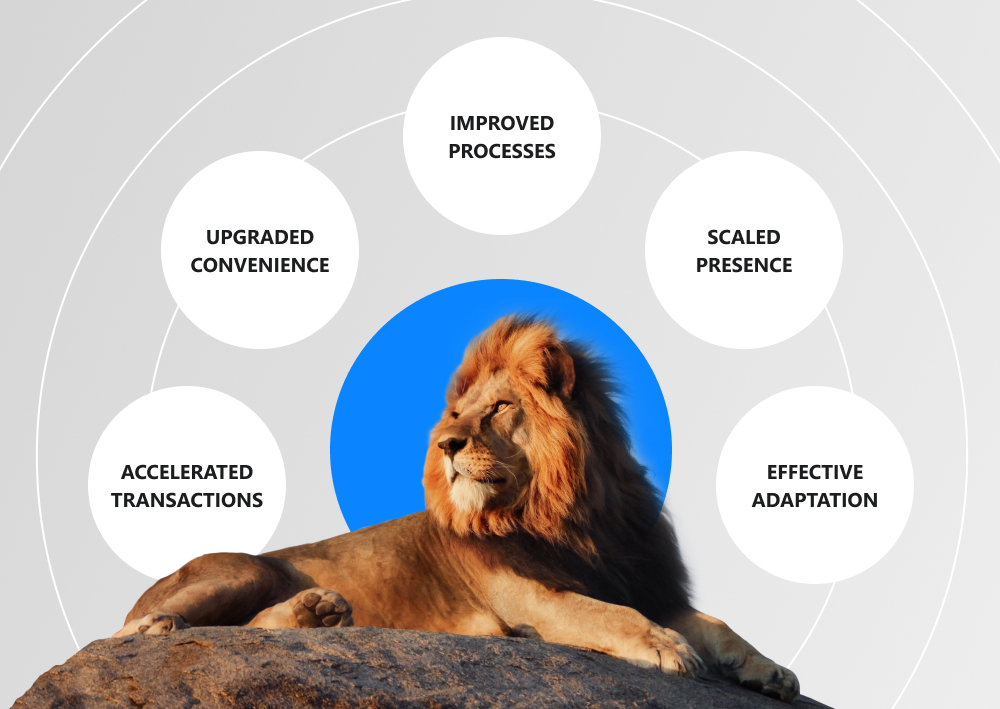Today's banks are more than just deposits and loans. Banks provide a broad spectrum of products and services and create a customer-focused and services-oriented payment ecosystem. According to Statista, the market cap of the global banking sector reached $8.5 trillion in the third quarter of 2021.
A core banking system is a base of advanced financial services today. It has become an essential integral part of the digital evolution of banking technology. So, how does core banking work, and what are the future prospects for financial systems?
WRITTEN BY:
Alexander Arabey
Director of Business Development
Contents
Core Banking System — No Turning Back
In recent decades, numerous technological innovations caused a significant shift in customer requirements. Now we can use the opportunities of in-home and on-the-go conveniences in retail, education, travel, and so on.
No wonder the same high level of service is expected from major industries. Fintech and banking are following the trends. Meanwhile, the digital transformation of financial institutions has also led to offering low-cost or even free banking products with advanced interfaces to a broader range of customers.
All that would have been impossible without banks implementing a core banking technological solution which is basically a network of bank branch connectivity. It provides account management and easy access to banking facilities without being tied to a certain branch.
In simple English, for clients, there is no need to visit a bank branch where they have opened their accounts, as all the range of banking services is available from any service unit connected to the core banking system.
No wonder that going back to old times without a core banking system seems unimaginable today.
Core Banking — Modern Solution
Let us have a short glance at the banking industry before core banking came into existence in the 1970s. How did it work then? In those times, a transaction could be posted to the account in a day if you are lucky. All branches used their local servers, and the data was sent to the data center servers at the end of the day. That old bulky system was transformed by the emergence of a Centralized Online Real-time Exchange (or Environment) or CORE banking system.
Сore banking systems have intensified the processing speed of most banking transactions in bank-customer relations. The core banking system is deployed on the centralized server, which adds to data protection. All the transactions and updates are recorded in real-time, and they immediately become available for the client and the bank.
Banking cores make it possible for the modern financial industry to provide various products and services. Without core banking, it would have been impossible:
- to accelerate the transaction speed;
- to upgrade convenience for customers and banks;
- to improve and intensify all banking processes and be able to focus more on marketing and sales;
- to scale bank presence in remote and rural areas;
- to adapt effectively to changing markets and customers' needs.
And do not forget about the significant cost reduction of financial products and services that are now available for a larger audience.
How Does It All Work?
So, what exactly is a core banking system? The Gartner glossary defines the term as "a back-end system that processes daily banking transactions and posts updates to accounts and other financial records." Banks implement specialized software responsible for deposit withdrawals, loan and credit processing, and other operations. Computer networks interconnect this software with the help of core banking systems.
Current banking technology is impossible without core banking software. This software is the engine for all operations: accounts, transactions, balances, journal entries, data storage, and reporting tools — everything is created and managed by core banking.
However, core banking applications are one of the main expenses for financial institutions. These spendings are based on a costly service-oriented architecture and assisting technologies. The architecture is connected by APIs and provides decoupling client data, products, and distribution channels. It enables making quick changes and provides a continuous digital customer experience. Payments processing, card issuing, onboarding, and KYC services are integrated into the core banking software.
Some banks have become more efficient in implementing their custom core banking applications. But in-house development is complicated and time-consuming. It causes team overloads and delays new product launches.
That is why for many financial businesses, the most effective choice is implementing commercial packages from independent software vendors or providers. And the modern solution is to choose the best offers of various providers, prioritizing them to your particular needs.
Core Banking Solutions — Trends from Leaders
Let us review the leading players of core banking solutions to mark the main trends in the financial market.
- Finacle. The innovative cloud-based core banking solution was developed by the multinational tech company Infosys. The Finacle platform now serves over 1 billion customers globally. This core banking software is highly modular, comprehensive, and secure.
- Finastra. The real-time core banking processing engine by this British developer is partnered with the largest financial institutions in the world. Their platform is highly flexible so that the clients can benefit from the variety of their transparent, innovative, and adaptable solutions. New functionality is launched and delivered with fewer risks thanks to Finastra’s modular technology stack.
- Oracle FLEXCUBE. Universal banking products of the US tech giant are now used by around 10% of the global population. Their modular software is interoperable and comprehensive. ML automation tools by FLEXCUBE enable their clients with advanced insights and improved straight-through processing.
So, we see that the leading providers tend to develop modular solutions that can be adapted easily to the particular needs of financial institutions. The rising demand for productivity boosted cloud-based solutions and AI technologies.
Core Banking Systems — COVID-19 Impact
What else is happening to the core banking software market these days? It's fair to say that all the industries are witnessing massive transformations due to the COVID-19 pandemic. According to Fortune Business Insights research, the global market of core banking software was no exception. At the beginning of pandemic times, the market shrunk — in 2020, it was estimated at $9.4 billion. But then, the demand for new smart technologies increased significantly — in 2021, the market size reached $10.84 billion. According to the researches, the market is projected to grow to $34.48 in 2028 at a CAGR of 18%.
The main reasons for core banking software's further development are caused by both sides — the customers and the financial institutions. First, the clients want a wide choice of offers at competitive rates. Also, the banks require effective solutions with increased credit processing capabilities and other advances.
However, security concerns such as app vulnerabilities, mobile malware, data loss, and unencrypted information are vastly increasing. So the demand for secure, flexible, and scalable core banking solutions is multiplying.
Bottom Line
So, we see that the digital transformation of the financial industry will not reduceits speed. And the development of core banking systems is an integral part of innovations. Key market players of core banking and Fintech are implementing advanced cloud solutions, AI, ML, and other technologies to help the industry efficiently respond amidst the New Normal’s requirements. This trend, we believe, will be continued.
Want to know more about core banking solutions for your business? Our experts have enough experience in banking software development. Contact our support team to get our professional advice. And keep up with our blog for more exciting insights.

Contacts
Feel free to get in touch with us! Use this contact form for an ASAP response.
Call us at +44 151 528 8015
E-mail us at request@qulix.com










